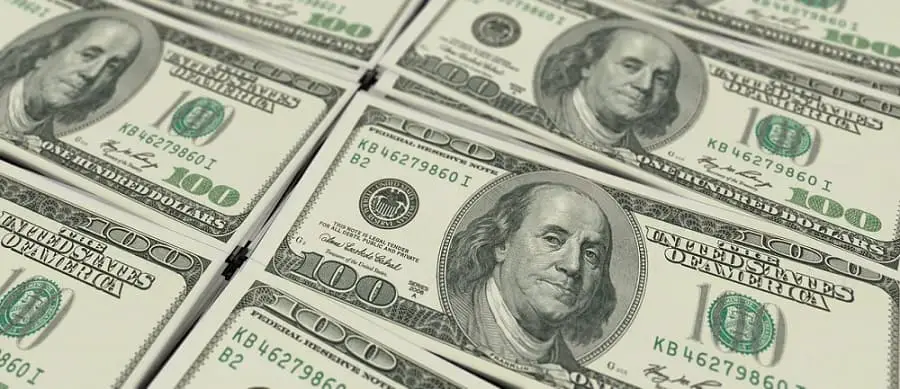If you are embarking on a career as a professional squash player or are just curious as a fan about how much are squash players making as their salaries, we try to dig deeper into this in the article below.
Tennis players have often been in news for their earnings and often make up quite a few players in the Forbes Highest Paid Athletes of the Year. In 2020, for instance, one of the greatest ever tennis player, Roger Federer earned a whopping $106.3 million during the period from June 2019 to June 2020.
As per Forbes, this made him not only the highest-paid tennis player for the 15th year running, but also the top-earning athlete on the planet.
Even though most of the earnings were due to advertisements and sponsorship, it only highlights how well top tennis players are.
In comparison, the prize winnings of the best squash players can barely make a speck on those from tennis.
Table of Content
Increase in Squash Earnings Post Re-Structuring
During the 2018-19 season there were two new tours launched; the Professional Squash Association Challenger Tour and the PSA World Tour.
This was done as a part of the PSA deciding to restructure things from a point of view of spreading the sport and making it a proper global sport. Just like in tennis, the PSA satellite tour got created to help the next generation of players to make a seamless transition into the professional circuit.
Since the Professional Squash Association (PSA) changed things around, the total prize money on offer during the 2018-19 season was $7,569,706. As compared to the previous year there was an increase of 10% in the prize money as a result of that.
Also Read:
For the women squash player, this prize money has increased by nearly 7% to around $3 million – while the prize money for the men increased by 12% to $4.63 million.
So how much did the best women’s player earn in 2018-19 season?
This should give you an idea about how much can you expect to earn over the years. The earning was slightly over $200,00 a jump of 84.9% since the women’s tour got integrated into the PSA in April 2015.
The earning for the men increased by 59.0% during the same phase, amounting to more than $250,000.
PSA Tour Director Hannah Ridgard-Mason stated:
“The new tour structure was put in place with the aim of increasing earning potential and playing opportunities across the entire PSA Tour.”
With more number of new tournaments opening up each year, the tour director forecasted that the future of squash was brighter than ever.
He said the season of 2018-19 proved to be a turning point in the history of squash, especially as far as the monetary benefits for players was concerned.
The season saw squash hold it first tournament with a prize money of $1 million tournament, thanks to the Walter Family in Chicago other than the PSA getting into a broadcast contract with Facebook. This allowed the telecast of squash tournaments to many more fans.
The Struggles of the Lower Rung Squash Players
The bright outlook projected by the caretakers of the sport however still is a long way from making a difference to the lower rung of professionals.
A number of players even stand to lose money when one considers the payments made for flights, hotels and training, more so if the player does not get to his/ her seeded position.
Unless a players makes it to the latter stages of a tournament, he/ she does not get adequate exposure and visibility which in turn means that sponsorships are minimal.
Also Read:
In that case players have to resort to taking part in exhibition matches and leagues to earn extra income.
With the Covid-19 induced suspension of tournaments affecting the income for squash professionals all over the world, a number of lower ranked players were looking towards the PSA to come up with an effective solution.
The World Tour Finals got organized once the suspension of tournaments were lifted, where only the top 8 players competed against each other.
The fact that the event was only for the those who are already earning well enough, while little was arranged for the lesser ranked players got a lot of them complaining and worried about their immediate future.
A Case Study on Squash Salaries
The World Championships are known to have the biggest purse as prize money. However, the number of players competing is also the most – typically 64.
Thus, the prize money though large, gets divided between greater number of players. Platinum tournaments have a pool of 48 players, while the Gold, Silver and Bronze tournaments generally feature only 24 players.
Then there is the exclusive event featuring only the top 8 players in the world – the World Tour Finals. The lesser number of participants and big cash prize mean that the winner of this event stands to earn the most.
As is quite evident from the above mentioned points, a larger total prize money does not convert into participants earning greater money.
The amount a player earns by competing in a particular event depends on the total cash prize, the number of competitors and obviously his/her standing in the final tally.
As a norm, if an event involves 16 participants, one fifth of the share is given to the tournament winner, the runner up stands to win 14% of the prize money. Players at number 3 and 4 get 9% each.
Squashstats.com undertook a case study to take a closer look at the likely earnings for one of the best players of the sport – Egyptian Karin Abdel Gawad.
Having competed in a number of events and finished at varying ranks, Gawad is an ideal example to take. During the 2018-2019 Season of the PSA World Tour, which is from September 2018 until June 2019 inclusive, Karim Abdel Gawad played a total of 14 tournaments (including the World Tour Finals) earning $175k.
Life Continues to Remain Tough for Squash Players
In 2016, to highlight the struggle that he had to face to ensure that he could continue pursuing his career as a squash professional, Indian squash player Ravi Dixit put an advertisement on Facebook, stating that he was willing to sell off one of his kidney for 0.8 mil Indian rupees.
He further stated that he intended to use that money to help him continue playing the sport. Ravi who is a former Asian junior champion later clarified that he had made this remark in jest, and only wanted to highlight the financial difficulties that face the journeyman player in pursuit of the sport.
Thankfully other players have more creative (and safer) option to help support their squash dream.
Low Wee Wern is one of Malaysia’s best squash players, and is looking to kick-start an online community which helps in finding her sponsors and in turn providing them information on how she could help them in return.
She wants to explain to them how she can help the sponsors each a greater fan base through social media interaction and meetings.
While details about their earnings from their sponsorship deals is not available, the top most players have multiple endorsements.
One of the top squash players in the world, Mohamed El Shorbagy, has endorsement deals with popular brands like Tecnifibre, Red Bull, Rowe, Channel Vas.
Similarly, Ali Farag, who is his biggest rival has has penned contracts with manufacturer Hyperfibre and Dunlop.
There is another Egyptian in the top three, Tarek Momen, who has Harrow Sports in his contractual shed. The Harrow brand has also signed up with women’s player Raneem El Welily while world no. 2 Nour El Sherbini represents brands like Dunlop ball, Tecnfibre Carboflex 125 NS and the NS Signature apparel.
The New Zealander Joelle King has signed up with HEAD to act as their brand ambassador apart from penning deals with Honda, USANA, ASICS and 67. On the other hand Serme Camille has been associated with Artengo as their brand ambassadors as well.
The Way Ahead for Squash Earnings
As PSA has been making deliberate efforts to change the tour structure and with that the prize winning as well, things are looking up for professional squash players.
The fact that there has been a distinctive increase in the earnings of the top players during the period from 2018-19 (till the Covid-19 lock down commenced) is also indicative of better days ahead for exponents of the sport.
There are further indicators like the conduct of the first ever Million Dollar Event at Windy City in 2018-19.
If and when squash manages to break the Olympic barrier and is able to reach out to the world on the biggest sporting stage, the sponsorships and prize money will only grow further.
Till then squash federations should continue making every possible endeavor to increase the popularity and visibility of the sport. The more the number of eyeballs that the sport is able to get, the great is the number of advertisers who will flock to the sport.
The efforts to increase the visual appeal of the sport by conducting it in glass courts with exclusive locations as backdrop (Pyramids of Giza) is a step in the right direction.


